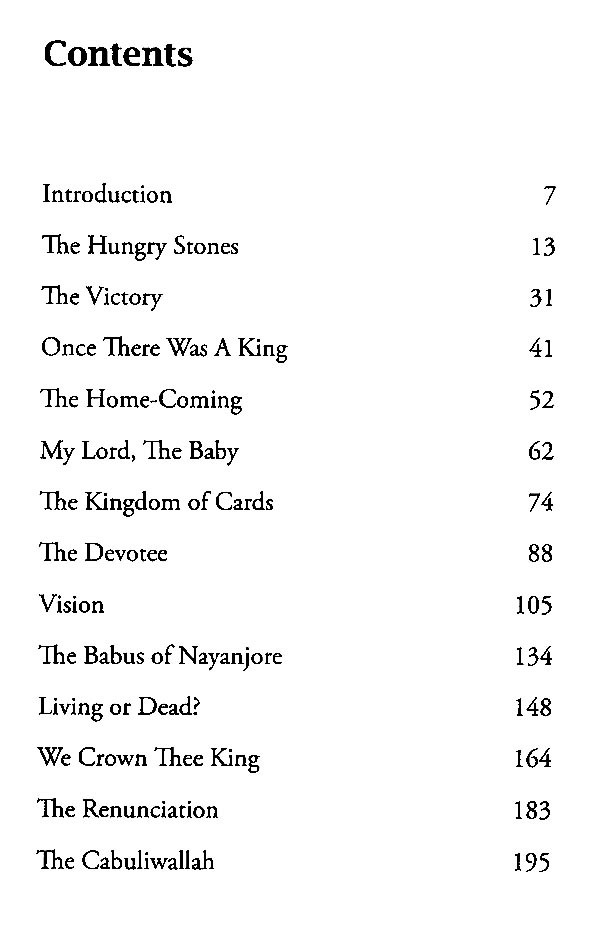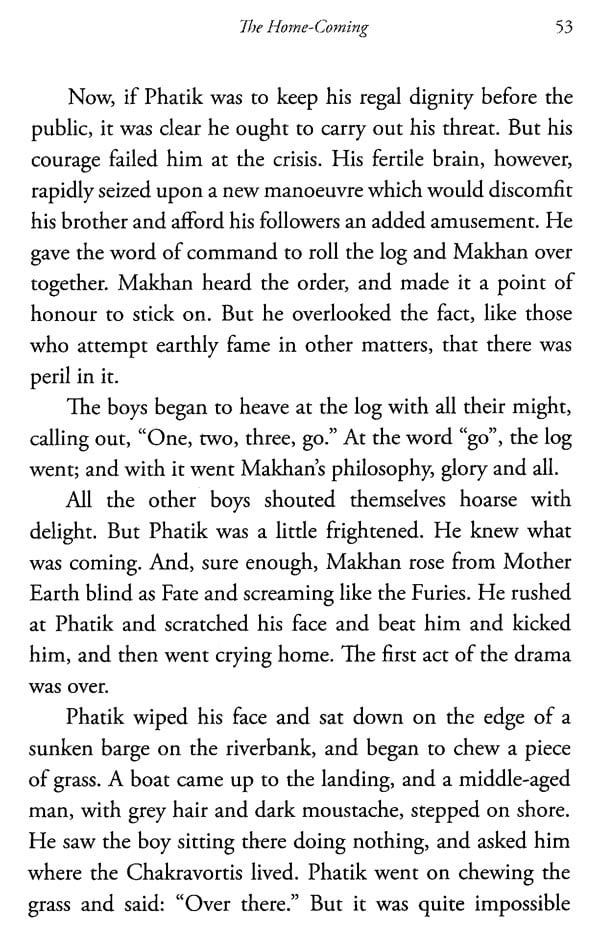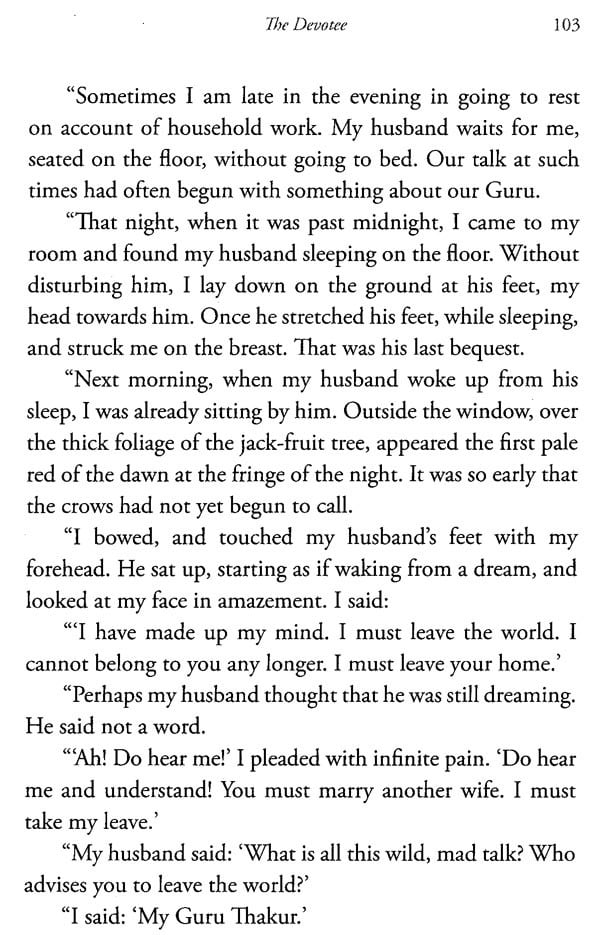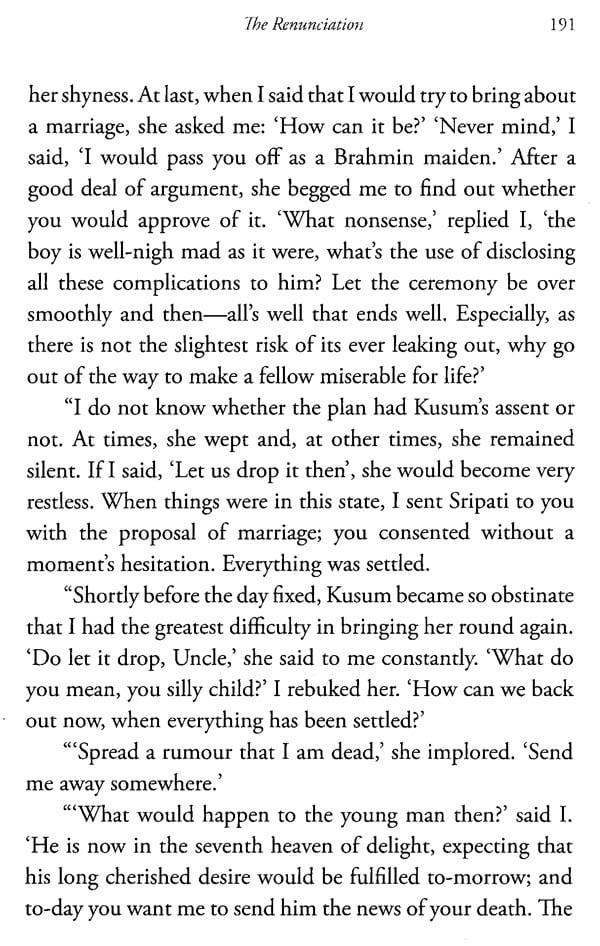Introduction R abindranath Tagore wrote his first short story 'Bhikharini' The Beggar Woman) in 1877 at the very young age of sixteen. After this, he did not think of writing any story for the next seven years. In 1884, at the age of twenty three he revisited the genre by writing three stories in quick succession: 'Ghater Katha' (The Story of the Embankment), 'Rajpather Katha' (The Story of the Highway) and 'Mukur' (The Crown). But Tagore blossomed as a short-story writer after a lapse of another seven years in 1891 when he was at the prime of his youth. He had just returned from England at the age of thirty, when he was ordained by his father to look after the family estate in North Bengal. He was mostly stationed in Silaidah, Sajadpur and Patisar area and would often spend days together in a boat on the river Padma. That was his first exposure to village life, as so far he had spent his entire life in urban Calcutta. He came in touch with the rustic people and their simple mode of life. There was an AZE The Hungry Somes and Other Starter clement of mystery in it for him, as they seemed to belong to a different planet compared to the life in Calcutta. Tagore has depicted snippets of this life with a of success unequalled by any other of our writers. The form chosen is the most felicitous. He has naturalized the short story in Bengali with wonderful success, so much so that Sir Jadunath Sarkar said, 'Paradoxical though it may sound, we confidently predict that his short stories will last longer than his poems. For, those are a truer representation of life, or rather a fuller view of life as a whole than his poems which give only a partial sketch of life and are incomplete even in that'. Indeed, Rabindranath retained all the excellent features of short story's French original, while he added beauties which were peculiar to him. Some of his descriptions in the stories like "The Hungry Stones' are flawless gems, perfect prose-poems, which only a practiced poetical artist could have produced. Some of his sentences and even single phrases in stories like "The Home-Coming have a wonderful suggestiveness and dramatic effect, bringing a whole scene before the reader's eyes. At the same time, Tagore is nothing if not an aesthetic artist. How does he, then, come across as an interpreter of life? Does he bring out any creed of which he is the preacher? Apparently, his view of art seems to be that 'art' has nothing to do with morality, and that to append a moral to any work only mars its beauty. Still, one may not have to go very far before one can glean some teaching from these tales.
**Contents and Sample Pages**
























